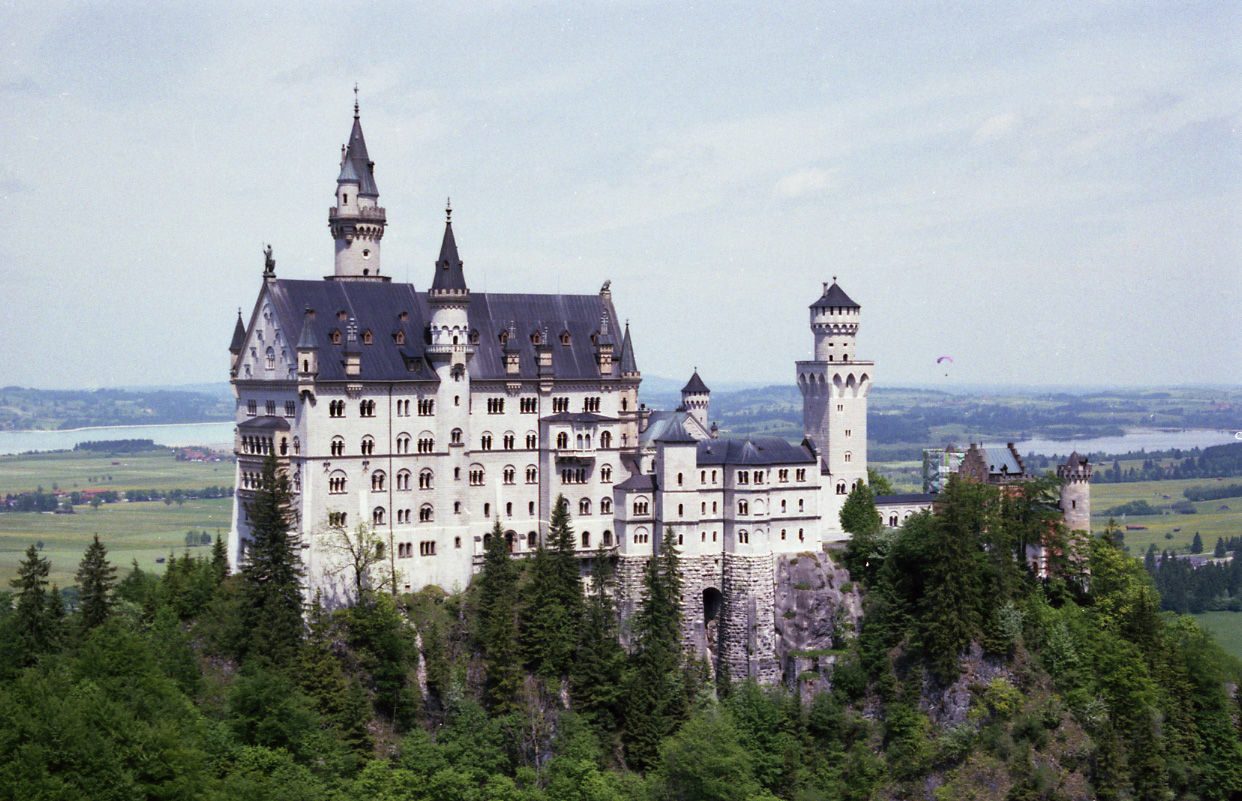History
Compared to other castles, Schloss Neuschwanstein is still in its infancy, as it was built in the late 19th century. Its construction began on September 5th, 1869, by King Ludwig II, who spent his childhood at Schloss Hohenschwangau, just a few hundred yards away from Neuschwanstein.

Before his reign, Ludwig spent his days dreaming of medieval knights and exploring the surrounding Alps. After his father, King Maximilian, died suddenly, an 18-year-old Ludwig became King of Bavaria. While Ludwig and Bavarian politicians disagreed, he followed his heart and decided to build a castle rather than be concerned with political matters. It would be no ordinary castle but a palace in the sky. He constructed it on the ruins of Vorderhohenschwangau and Hinterhohenschwangau above Schloss Hohenschwangau.
Ludwig decided to build a castle resembling the old German knight castles, which evolved into the Romanesque style during the planning stages. The King's passion for epic German sagas was influential in its design. Stage set designer Christian Jank designed the castle, which the architect Eduard Riedel realized. Consequently, the interior depicts various scenes from the great operas written by Richard Wagner, based on the Tannhauser and Lohengrin legends. An additional tower dwarfing the rest of the castle was planned for Neuschwanstein's courtyard, but Ludwig died before its construction began. Only 14 rooms of the castle were completely finished.
While construction was underway at Neuschwanstein, King Ludwig was also building Linderhof and Herrenchiemsee castles with plans for a fourth structure. The King's relatives decided that too much of the royal fortune was being squandered by the dreamer on his fairy-tale castles, so they declared him insane. As a result, Ludwig was arrested on June 12th, 1886, at Neuschwanstein and taken to Berg Palace on Lake Starnberg. His body was discovered the next day in the lake with his psychiatrist, Dr. Bernhard von Gudden. The King's death remains a mystery to this day. Some say he was murdered, while others say it was suicide.
The King never intended to make the castle accessible to others; however, seven weeks after Ludwig's mysterious death, Schloss Neuschwanstein was opened to the public. Today, Neuschwanstein is one of the most famous castles to visit in Europe. Approximately 1.3 million people visit the castle of the fairy-tale King every year.
Due to its remote location, Schloss Neuschwanstein avoided any damage or destruction during World War I and II. It was used as a Nazi depot until 1944 for storing stolen art from France during World War II. The Schutzstaffel (SS) considered blowing up the castle and the artwork stored within in April of 1945 to keep the castle and plunder from falling into enemy hands, but those plans went unfollowed. The castle peacefully surrendered undamaged to allied forces at the war's end.
Castle Highlights
Schloss Neuschwanstein is one of the must-see castles in the world. I visited the castle seven times and was amazed each time. Due to its location high atop a hill, it is a long uphill climb to the castle with numerous steps to navigate once inside. However, it is well worth the effort. There is a horse-drawn carriage from the village to a location near the top of the hill for a small fee.
A guided tour of the castle interior is highly recommended and the only way to see the inside of the castle. Purchasing tickets online or in the town before embarking on the uphill climb to the castle is also necessary. The finished rooms inside the castle exhibit exquisite detail in the wood carvings and wall paintings. However, three rooms, in particular, stand out from the rest.
The Throne Hall includes a massive chandelier in the shape of a royal crown, in addition to depictions regarding the legend of Parzival (Parisfal) on various walls. There are also images of six European rulers and Christ above the kings over the throne area. The only item to be added to this room is the throne itself. The King's bedroom is the only portion of the castle designed in Gothic style. The wood carvings on the bed and canopy are amazing. There is also a secret door, which blends seamlessly into the wall to Ludwig's bathroom. The last room on tour, the Singer's Hall, resides at the top of the castle. It was designed so Ludwig could have private showings of his favorite operas and plays. The hall was modeled after the banquet hall in the Wartburg.
Proper planning makes it possible to visit Neuschwanstein and Hohenschwangau on the same day. I recommend booking ahead online and booking a morning tour of Hohenschwangau and an afternoon tour of Neuschwanstein 3-4 hours later, leaving time for lunch in between.


